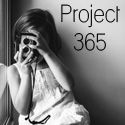1) I don't know what makes a great photo besides my own preference. I am sure that there is a system to assessing the greatness of a photograph. I just don't know it.
2) How do you edit a photograph in the first place? Is there some kind of technology that I need that I don't have?
3) I have always been anti-editing photos. I thought that the natural beauty should show through without any alteration. If you're a good photographer, you will capture your subject in their natural state exactly as beautiful as they are in that moment, right?
Well today I used my out-of-the-box super simple iphoto software to edit these beauties. I did minimal editing. Like I couldn't edit an area or change anything. All I had the capability to do (as far as I could tell) was change saturation, contrast, etc... So here are a few:
All I really did was change the "temperature" of these photos. The idea of the pictures in the first place was to enjoy the beautiful autumn day and capture the golden leaves with the auburn-haired precious baby. Most of my pictures, however, came out pretty blue-ish gray and just really cold.
I think the first one is probably too saturated-looking. Any tips on free editing software or resources on learning how to edit photos would be great.




This comment has been removed by the author.
ReplyDeleteHi! I don't like overly edited photos either. Sometimes I see photos where they are so doctored that the people look like mannequins! I do however like making some tweaks here and there to make a photo pop or give a certain mood to.
ReplyDeleteAs for free editing software, you can try out any of the Adobe programs free for 30 days. Just download from their website. I really like Lightroom, so if you try it and like it you can purchase the license and it's under $200 (less if you are a student). Before Lightroom I used Picasa (from Google) which is free and you can do quite a bit with it. GIMP is a free program similar to Photoshop. You can also find a lot of free presets (Lightroom) and actions (Photoshop) on deviantart.com and some photographers offer freebies occasionally.
As for learning the software, there are tons of articles you can find on Google or YouTube.
I hear what you are saying about the editing. One way to think about it, however, is that just because photos are digital now doesn't mean they don't still need to be processed. When you shoot in jpeg mode, the camera has built-in software that does the 'processing' for you, and generally does pretty good but not always. So just like you would use a filter when developing a b/w film photo to bring out contrast or highlight the whites back in the day, you use warmth, tint, contrast, vibrancy, etc to process a digital photo. To best make use of your camera to do this stuff, be sure to always shoot your photos in RAW (usually all of the manual shooting modes - which may be why your photos were looking blueish). The files are a bit bigger, but they are bigger because they have more info and are much more flexible in terms of processing them. I see all of this as being in a different category than making a model look 20 lbs lighter or more intense graphic design stuff.
ReplyDeleteIn terms of software, I second the Lightroom. It essentially is a darkroom for digital photos. It does cost a bit, but you will not regret it and if Landon is still enrolled in school he can get it for like 80. There are some free ones out there (Picasa is as good as any) buy they are usually slower and much less powerful/accurate. You can try that out though to see how it goes.
Hannah, I just ran into your blog a couple of days ago, loved it, loved your pictures, loved your baby, and so I did some major stalking!
ReplyDeleteI edit my pictures sometimes. But, if you get your settings right initially, you usually don't need to. To prevent the blueish tint, you have to get your white balance right. So, put your camera in manual or one of the more manual settings, there should be a WB button somewhere on your camera. Play around with it until your pictures have a nice warm, natural color to them. I find that when I'm shooting in natural lighting, auto white balance usually does the truck. Good luck!